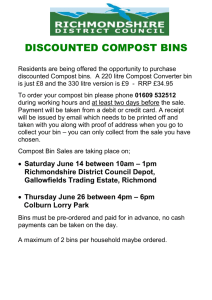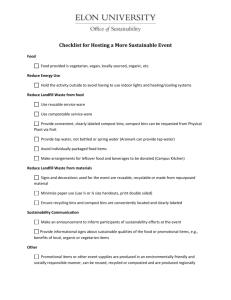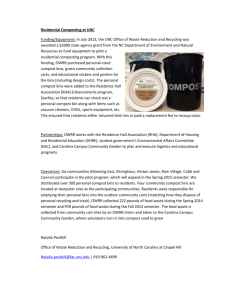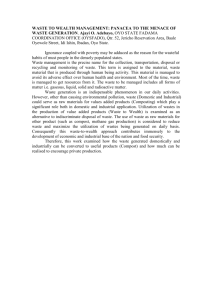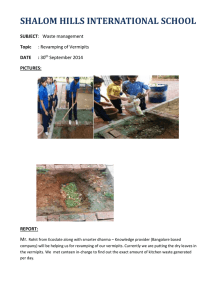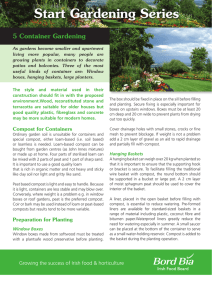composting
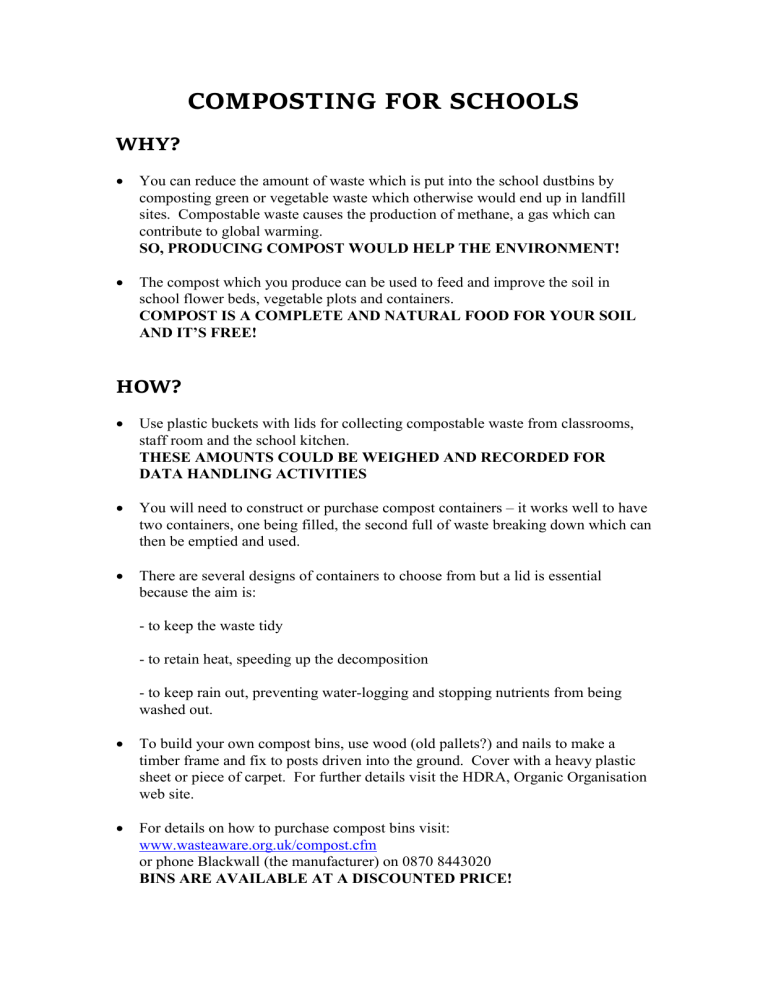
COMPOSTING FOR SCHOOLS
WHY?
You can reduce the amount of waste which is put into the school dustbins by composting green or vegetable waste which otherwise would end up in landfill sites. Compostable waste causes the production of methane, a gas which can contribute to global warming.
SO, PRODUCING COMPOST WOULD HELP THE ENVIRONMENT!
The compost which you produce can be used to feed and improve the soil in school flower beds, vegetable plots and containers.
COMPOST IS A COMPLETE AND NATURAL FOOD FOR YOUR SOIL
AND IT’S FREE!
HOW?
Use plastic buckets with lids for collecting compostable waste from classrooms, staff room and the school kitchen.
THESE AMOUNTS COULD BE WEIGHED AND RECORDED FOR
DATA HANDLING ACTIVITIES
You will need to construct or purchase compost containers – it works well to have two containers, one being filled, the second full of waste breaking down which can then be emptied and used.
There are several designs of containers to choose from but a lid is essential because the aim is:
- to keep the waste tidy
- to retain heat, speeding up the decomposition
- to keep rain out, preventing water-logging and stopping nutrients from being washed out.
To build your own compost bins, use wood (old pallets?) and nails to make a timber frame and fix to posts driven into the ground. Cover with a heavy plastic sheet or piece of carpet. For further details visit the HDRA, Organic Organisation web site.
For details on how to purchase compost bins visit: www.wasteaware.org.uk/compost.cfm
or phone Blackwall (the manufacturer) on 0870 8443020
BINS ARE AVAILABLE AT A DISCOUNTED PRICE!
WHERE?
Compost containers should be located in a “tucked-away”, but easily accessible (in all weathers!) position.
Position compost containers in a sunny, well drained area on bare soil or grass.
Avoid areas exposed to cold winds.
WHAT?
GOOD
-Raw vegetable peelings
BAD
-Meat or fish
-Fruit cores and skins (avoid too many citrus remains)
-Tea bags
-Old plants and flowers
-Egg shells (crushed)
-Grass cuttings (in small amounts)
-Torn or shredded paper/soft card
-Fat
-Dairy products
-Evergreen leaves
-Prickly materials
-Coloured and shiny paper
-Any cooked food
-Straw and sawdust
In hot weather it may be necessary to add water – your compost should be moist, but not soggy!
Aerate it – turn the materials occasionally or add a little crumpled newspaper
Keep the lid on to insulate the container – the greater the heat, the quicker the composting process.
A good mix of materials is essential.
AFTER THREE – NINE MONTHS, DEPENDING ON THE SEASON,
YOUR COMPOST WILL BE READY TO USE!




